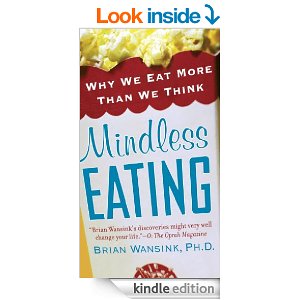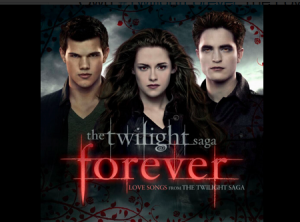 Is there really such a thing as dude food? If you were an alien looking in on our culture of Burger King and Yoplait ads you would certainly think so. But how much of our “dude food” and “chick picks” food preferences are based on cultural and gender stereotypes and messaging? A lot, according to “Mindless Eating: Why We Eat More Than We Think,” a book I recently picked up.
Is there really such a thing as dude food? If you were an alien looking in on our culture of Burger King and Yoplait ads you would certainly think so. But how much of our “dude food” and “chick picks” food preferences are based on cultural and gender stereotypes and messaging? A lot, according to “Mindless Eating: Why We Eat More Than We Think,” a book I recently picked up.
The author, Brian Wansink, is the director of Cornell University’s Food and Brand Lab and a professor of consumer behavior. We—the American consumer—are the lab rats for this scholar of the drive through window and the office candy bowl. I must say, we make pretty interesting subjects.
The average person makes more than 200 food decisions a day-and can’t explain most of them-according to Wansink. But society certainly seems to play a role.
While most traditional diet and nutrition books focus on what dieticians and health practitioners know, this book focuses on what psychologists and marketers know, and offers some new insight into why we eat what we eat.
For example, Wansink’s research found that 40 percent of people, both men and women, identified their favorite comfort foods as relatively healthy fare like soup, pasta, steak, and casseroles.
However, when it came time to rate a list of the foods they personally found the most comforting, “men and women might well have been from Mars and Venus,” writes Wansink. Women chose ice cream, chocolate and cookies as their most comforting foods. Throw in red wine and a Meg Ryan DVD and you’ve pretty much got my “cure for a stressful day” shopping list. Men, on the other hand, chose ice cream, soup and pizza or pasta as their comfort food faves.
The explanation for these preferences?
“When we asked men why they preferred pizza, pasta and soup over cakes and cookies, men generally talked about how good they tasted and how filling they were.” But when the researchers probed a little more they got additional feedback from the men that those foods made them feel cared for, important, or the focus of attention of either their wife or their mother.
No wonder they found them comforting.
When women were asked about those same foods, they found them less comforting because they thought about having to make them-or how hard their mothers had worked to make them-and then having to clean up after making them. In other words, despite the ease of picking up the phone and calling Rusty’s, which I guess they don’t have in Ithaca, some of the so-called comfort foods signaled discomfort for the women.
“For women, snack-like foods-candy, cookies, ice cream, chocolate-were hassle-free. (I guess they’re not making handmade truffles or Cherry Garcia.) Part of their comfort was to not have to make up or clean up anything. It was both effortless and mindless eating,” writes Wansink.
This book definitely made me wonder if the reason so many men behave like Hoover vacuums when it comes to food is that they aren’t usually the ones to clean up afterwards. It also made me wonder (be still my heart) if the younger generation of men, who willingly drink Diet Cokes and eat Cesar salads without making jokes about keeping their girlish figures, might also be more willing to pick up the vacuum.









